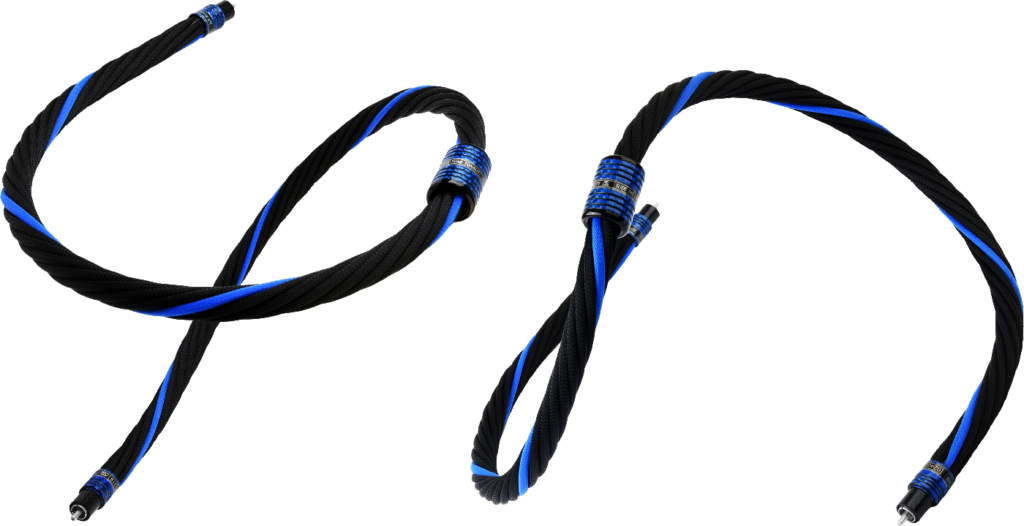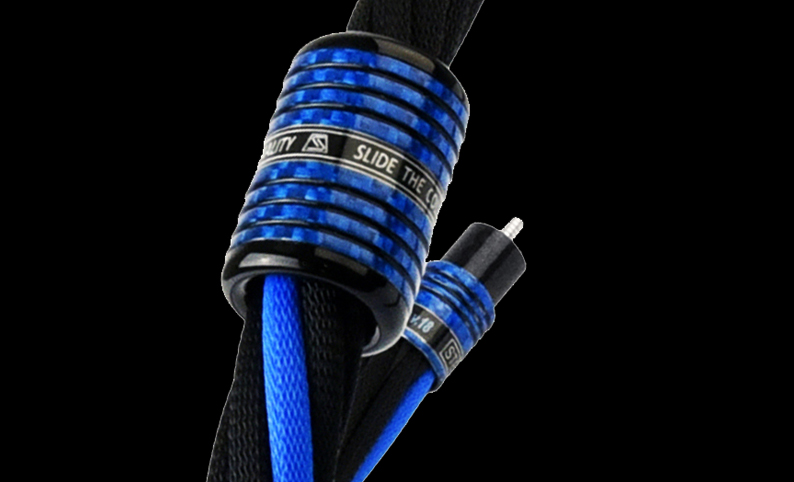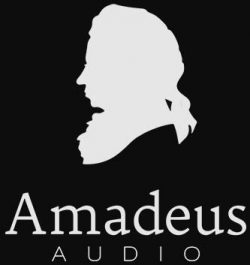Varidig is different from any other digital cable on the market because its porous Teflon® dielectric is thicker in the middle of the cable than it is at the ends. This specialized dielectric geometry eliminates
(greatly reduces) impedance mismatch at the critical points (where the connectors are attached to the cable, i.e. between the inherently low-impedance RCA connectors, and the cable itself) which allows to achieve a true 75 Ohms impedance of the ENTIRE cable (including RCA connectors) and therefore greatly reduces signal reflections in the cable.
The dielectric is porous (i.e. not solid, foam-like) and contains air bubbles. These air bubbles reduce the dielectric constant from 2.0-2.2 typical for solid PTFE (Teflon) to approximately 1.4 in porous Teflon. In general, the lower the dielectric constant of a dielectric used in cables, the lower the energy storage in cables. This transforms into perceived differences: “speed” in analog cables, and “clarity” in digital cables).
In additional to impedance matching, the Varidig cable has considerably less pronounced internal cables resonance(s);
Less pronounced resonance (lower resonance “Q”) = more subjective clarity in sound;
When we place an audio system in a room, we prefer no parallel walls = no standing waves and less resonance; plus we acoustically treat rooms for OPTIMUM damping (underdamped is bad (sounds too lively), and over damped is bad, too (sounds dead, dull). What we need is optimum damping – not too much and not too little.
We apply this concept to our cables: in addition to its superior dielectric properties, porous Teflon is soft and can be made more or less dense – i.e. various in mechanical damping. Fine tuning in this case is done by iterations (we vary density of the dielectric and listen). With Varidig, no length-dependent sound difference was noticed (or reported back to us), which confirms that the Varidig cable sound the same in all reasonable lengths. This is based on the statistics we have accumulated (we carefully examine the feedback we get from our customers);
S/PDIF and AES/EBU cables do sound differently despite their using the same design concept.
Why? Because of several things, IMO:
1. Connectors considerably influence the sound quality in all cables, but in digital audio the quality of a connector is even more important than in analog audio. S/PDIF and AES/EBU cables employ different connectors and this is partially responsible for the sonic differences.
2. In both DACs and transports, S/PDIF and AES/EBU chips are different, and these chips have different sound. In some equipment pieces, chips are the same, but S/PDIF signal goes in and out directly, while the AES/EBU goes through a built-in impedance matching transformer – which is also responsible for sonic differences.
3. There is no way to predict whether S/PDIF or AES/EBU would sound superior, the only way known to me is to get both S/PDIF and AES/EBU cables and listen and decide which one sounds best (with the given transport and DAC pair).
The differences in digital cables – while still audible – are usually not as clearly “pronounced” as in the analog interconnects.
Mostly because a decent DAC can “lock” on a digital signal being transmitted via about any two wires, and still sound 1/2
decent… But with a good digital cable it will sound better!
Digital signal is transmitted via a digital “transmission line” – where the output impedance (of a transmitting device), the digital
interconnect cable impedance, and the receiver (DAC) impedance is the same: 75 Ohms (or 110 Ohms in AES/EBU, i.e.
balanced digital).
This is a CHARACTERISTIC impedance – which is NOT the same as electrical impedance.
The CHARACTERISTIC impedance is directly related to the geometrical dimensions of a cable and the properties of the dielectric used. It can be calculated using several parameters of a cable, but all we need to know to understand the Varidig concept is that for the given center conductor thickness (in a coaxial cable) and given dielectric, a thicker cable will have a higher characteristic impedance than a thinner one.
The vest majority of digital audio cable used for S/PDIF are coaxial, and made from a bulk machine-made coaxial cable. The funny thing about the characteristic impedance is that while it’s defined as the impedance of a cable of infinite length (very very long), a short piece of this cable will have the same characteristic impedance – if this cable is constant in diameter along its length.
The STEALTH Varidig digital cable is different: its thickness (diameter) is not constant and varies along its length; hence the name Varidig – from Variable Digital.




